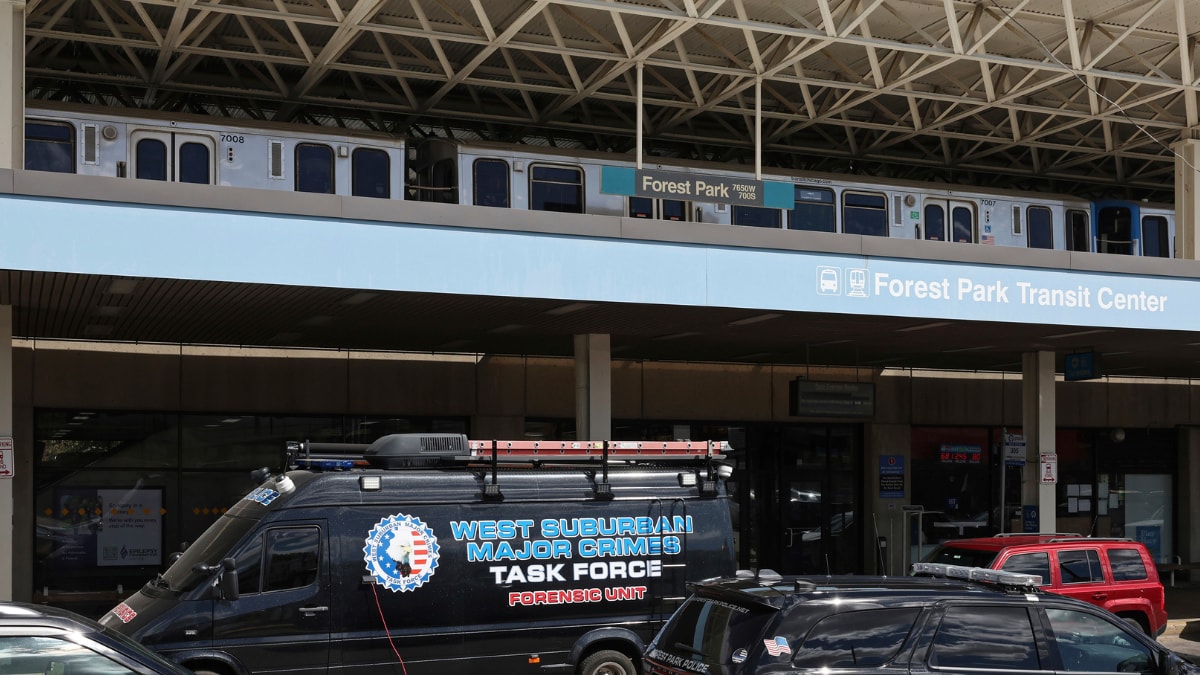The shooting on a Chicago commuter train on Labor Day morning sent shockwaves through the community, leaving four people dead. The incident, which occurred on the CTA Blue Line, highlighted the vulnerability of public transit systems to violence and raised questions about passenger safety. While authorities deemed the incident isolated, the tragedy underscores the need for a multifaceted approach to address crime on public transportation.
The Tragic Incident
The shooting took place on the morning of Labor Day, at approximately 5:30 a.m. on the Chicago Transit Authority’s (CTA) Blue Line. Three victims were pronounced dead at the Forest Park station, while the fourth succumbed to their injuries at a hospital. The suspect, who fled the scene, was later apprehended on a different train route. A weapon was recovered by authorities.
Forest Park Deputy Chief Chris Chin described the shooting as “shocking” and “horrible,” emphasizing that this “heinous and egregious act of violence” should never have occurred, especially on public transportation. The CTA echoed this sentiment, highlighting the importance of security camera footage in assisting investigators.
Impact on the Community
The shooting reverberated throughout the community, especially in Forest Park, where the incident took place. With a population of 14,000, Forest Park is uniquely situated as the only Chicago suburb in Cook County where two major train lines terminate. This makes the community a hub for commuters, leading to a heightened awareness of the vulnerability of public transportation systems.
Mayor Rory Hoskins expressed profound sadness and stated that his community’s police and fire departments frequently respond to incidents at the Forest Park station. The tragedy brought a heavy sense of grief to the community and highlighted the shared vulnerability of public transportation users to violence.
Passenger Perspectives
For commuters like Sean McNulty, the shooting underscored the unfortunate reality of crime on public transportation. McNulty, a regular rider of the CTA, shared his perspective that criminal activity has become a common occurrence, prompting many passengers to adopt heightened vigilance for their safety. He explained, “You just kind of get used to it,” highlighting the need for comprehensive measures to deter and address criminal activity on transit systems.
The Need for Vigilance
The shooting on the Blue Line further cemented the importance of maintaining awareness of one’s surroundings while using public transit. The incident served as a stark reminder of the unpredictability of violence and emphasized the need for passengers to stay alert and be cautious while commuting. The heightened awareness of potential danger, although an unfortunate necessity, reinforces the urgency of addressing underlying issues contributing to crime on public transit.
Addressing the Issue of Crime on Public Transit
The shooting on the Blue Line spurred discussions regarding the need to address the problem of crime on public transportation systems. While authorities maintain the isolated nature of the incident, the broader context demands a comprehensive approach to prevent future occurrences and ensure the safety of passengers.
Investing in Security Measures
One crucial element in addressing crime on public transit is investing in enhanced security measures. This includes increasing the presence of law enforcement officers, deploying advanced surveillance technology, and implementing strategies for deterring potential criminals. While balancing security measures with preserving civil liberties is essential, robust security protocols are crucial for public safety.
Addressing Root Causes
Addressing the root causes of crime on public transit is essential for achieving long-term solutions. Factors like socioeconomic disparities, lack of economic opportunities, and limited access to mental health services contribute to the cycle of crime. By tackling these underlying issues, we can create a more equitable society and reduce the prevalence of violence, including on public transportation.
Collaborative Approaches
Collaboration among law enforcement agencies, transit authorities, and community stakeholders is critical for fostering a safer environment on public transportation. By engaging with the community and soliciting feedback from riders, transit authorities can gain valuable insights into the vulnerabilities and challenges they face, leading to better informed safety measures.
Takeaways
The shooting on the Chicago commuter train serves as a tragic reminder of the fragility of public safety, even on a seemingly routine commute. The incident highlights the urgency of addressing crime on public transportation through a comprehensive approach that includes:
- Enhanced security measures to deter potential violence and provide passengers with a sense of safety.
- Addressing the underlying social and economic factors that contribute to crime on public transportation.
- Promoting open communication and collaboration between law enforcement, transit authorities, and the community to effectively tackle crime and build a safer environment for riders.
While isolated events may spark immediate attention, fostering a long-term commitment to addressing the complex challenges of public safety on transit systems is paramount. A proactive and multifaceted approach is needed to protect commuters and ensure a safe and reliable public transportation system for all.




